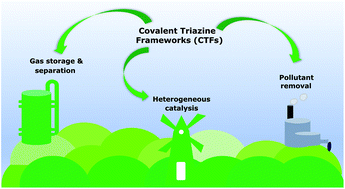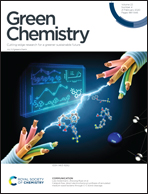Covalent triazine frameworks – a sustainable perspective
Abstract
Porous materials have played a major role in several applications such as catalysis, adsorption, gas storage, electronics and molecular separation. Henceforth, the design of porous materials has always been an essential field of research. Recently, covalent triazine frameworks (CTFs) have emerged as a versatile platform for such applications owing to their chemical tunability, high surface areas, permanent microporosities and high stability. CTFs have shown great potential for tackling important energy and environmental based challenges. This review summarizes the development of CTFs and its application in gas storage and separation, pollutant removal and catalysis. A critical outlook from a sustainable perspective on its design as well as application is provided focusing on its practical implementation.

- This article is part of the themed collection: International Symposium on Green Chemistry 2019


 Please wait while we load your content...
Please wait while we load your content...